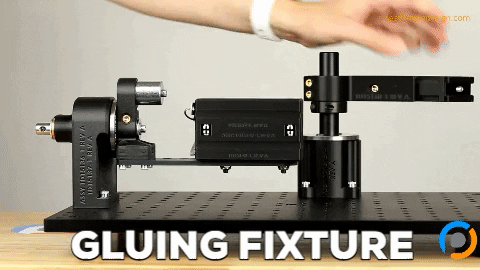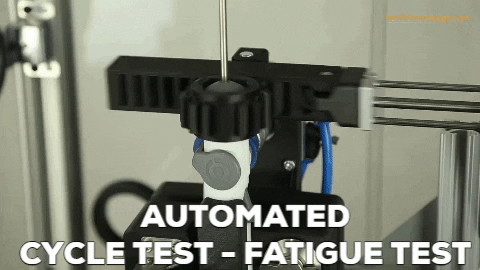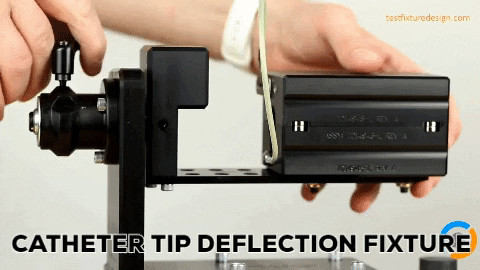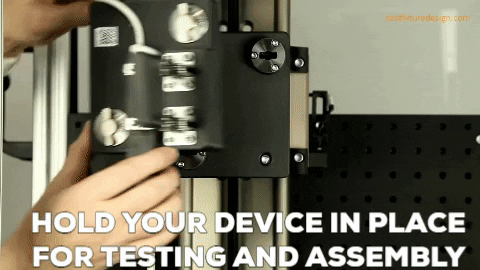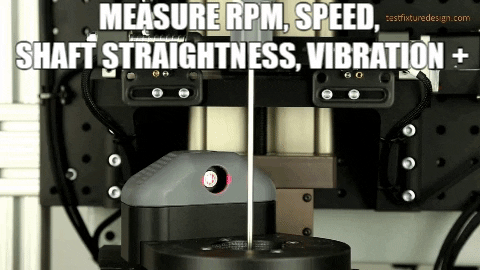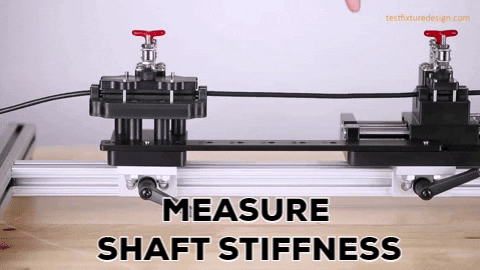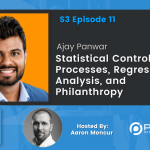Axel Krieger | Autonomous Robotics in the Medical Device Field
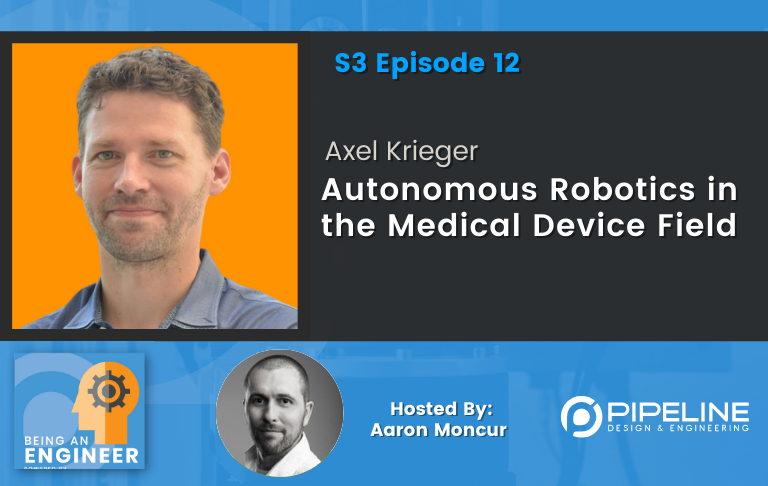
Who is Axel Krieger?
Have you ever wondered how medical robots work? Join us in this interview with medical device roboticist Axel Krieger to learn how his team developed a fully autonomous robot that has been shown to produce surgical results superior to those produced by human surgeons.
Axel is an assistant Professor in the Department of Mechanical Engineering at the Johns Hopkins University. He leads a team of students, scientists, and engineers in the research and development of robotic tools and laparoscopic devices. A few of the projects he has led include the development of a surgical robot called the smart tissue autonomous robot (or STAR for short) and using 3D printing for surgical planning and patient specific implants.
EXPAND TO VIEW EPISODE TRANSCRIPTION
SUMMARY KEYWORDS
robot, surgeon, sutures, surgery, tissue, star, engineer, robotics, johns hopkins, autonomous, bit, patient, autonomy, cameras, great, study, da vinci robot, axel, germany, hospital
SPEAKERS
Presenter, Aaron Moncur, Axel Krieger
Presenter 00:00
Hi everyone. We’ve set up this being an engineer podcast as an industry knowledge repository, if you will, we hope it’ll be a tool where engineers can learn about and connect with other companies technologies, people, resources and opportunities. So make some connections and enjoy the show.
Aaron Moncur 00:31
Hello, and welcome to another episode of The being an engineer podcast. Our guest today is Axel Krieger, who is an assistant professor in the Department of Mechanical Engineering at the Johns Hopkins University where he leads a team of students, scientists and engineers, and the research and development of robotic tools and laparoscopic devices. A few of the projects he has led include the development of a surgical robot called the Smart tissue autonomous robot or star for short, and using 3d printing for surgical planning and patient specific implants. Axel. Welcome to the show.
Axel Krieger 01:07
Thank you so much for having me.
Aaron Moncur 01:09
All right. Well, let’s let’s get started with the same question. I asked everyone in the beginning, what made you decide to become an engineer?
Axel Krieger 01:18
Fantastic question. For me, it was really an affinity to math and physics and science classes in school. I grew up in Germany, and then in the last two years in high school, you can really specialize in different courses and different classes. And I absolutely pick those sciency courses. And realize that’s really my passion and interest. My dad was also an engineer. So that really helped, you know, clarify the picture for me a bit. And that’s when I then, you know, chose to become an engineer.
Aaron Moncur 01:49
Neat. And how long have you been in the US?
Axel Krieger 01:54
I first came to the US for an internship back, right at two, right at 2000. You know, I was studying in Germany, and did an internship with a German automotive company in South Carolina. And that’s where I met an awesome girlfriend and who’s now my wife.
Aaron Moncur 02:16
Congratulations.
Axel Krieger 02:18
Oh, good, good. incentive to stay in the US. So it’s free. But, you know, we continue dating, and then I came back for doing research and, you know, for my PhD.
Aaron Moncur 02:31
Cool. Do you travel back to Germany very often?
Axel Krieger 02:35
Definitely. Here I go, you know, once or twice a year, and sometimes bring the family now
Aaron Moncur 02:41
have? Have you noticed at all if engineering in Germany is much different than engineering here in the States?
Axel Krieger 02:50
Definitely. In Germany, I had the feeling that was very automotive focused, that’s, you know, such a big, you know, you know, component of the industry there. And so, you know, studies are a lot about out of motor work. And so yeah, I think a different focus here a bit I feel.
Aaron Moncur 03:09
Yeah, that could be alright, well, let’s see, let’s jump into the meat and potatoes here. You, you help develop the the star robot, the the smart tissue autonomous robot, and there was even a study recently published in Science robotics. Can you tell us a little bit about what is this star robot and and how does it work?
Axel Krieger 03:35
Fantastic. Yeah, we developed the smart tissue autonomous robots for doing precision surgery. And recently, we demonstrated the first autonomous keyhole surgery. That actual surgery is called an NS, the Moses. So that’s reconnection of a tubular structure. So that’s the clinical term and as the Moses, so we’re working on bowel tissue. So imagine you have colon cancer surgery, for example, you take out the diseased tissue, and then you need to reconnect it together. And that is done with sutures. It takes, you know, really precision placement of about 20 sutures to leak to create a leak free reconnection. It’s very critical, very difficult step of so many surgeries. And so that’s what we’ve been focusing on. And in this recent study, we were demonstrating autonomous, you know, suturing, of bowel tissue, and not just with open surgeries have full access, but with keyhole surgery, so small tools, small cameras going into the body and doing that internally.
Aaron Moncur 04:45
That’s amazing. You mentioned joining two cylinders, so we’re basically connecting like an artery or something like that to two tubes,
Axel Krieger 04:55
exactly two tubes. So and as the most is the general term for any recording of tubular structures. And in this instance, we’ve been working on bowel, so intestinal tissue, so two halves of an intestine, they’re connected into end. So you know, if you dissect them in the middle, take out tumor, a section of the bowel with tumor, for example, then you reconnect the healthy ends together and to end,
Aaron Moncur 05:23
I see, that is really interesting. How, what does the interface look like when the the the two ends? The free ends of those tubes are joined is is it like, they’re each kind of flange out and but welded before there’s sutures across that that flange diameter? Or is it like one of the tubes, you kind of squeeze it? So the diameters a little smaller? And then you tuck it into the ID of the adjacent tube? And then you kind of stitch circumferentially? What does that interface look like? Yeah, another
Axel Krieger 05:55
bit of the former, so you just kind of naturally happens. So you’ve placed a suture into kind of both sides, and then pull it together, and the tissue deforms a little bit and parts against each other. So you can kind of like, you know, you have like 20 sutures there. So you get kind of a baby pattern. And sometimes the tissue goes a little bit to the outside, that’s better than going to the inside, because then you reduce the, you know, diameter. So then, you know, both, you know, so could kind of like, you know, I see get shocked. So you want it to kind of go to the outside, and we call it to invert the tissue to coat the outside. So it becomes a bit of a baby, you know, pattern where you have tension on the sutures, and then no tension in between. But you need to have it close enough. So you don’t get any of the, you know, leakage to the outside which cause of course, you know, huge potential issues.
Aaron Moncur 06:54
Sure, yeah. Okay, so about 20 sutures or stitches to get it closed, leakproof sealed, and these these vessels are, I don’t know, maybe what like, I don’t know, three, four millimeters in diameter, something like that.
Axel Krieger 07:09
They’re a bit larger than that, you know, the small bowel is maybe around 10 millimeters, something like 1012 millimeters in size. Got it?
Aaron Moncur 07:19
Okay. Okay. I read this article about the star robot, and and this laparoscopic surgery that I guess your team or a team of surgeons had completed, not a team of surgeons, the robot had completed autonomously on a pig, and it was apparently very successful. Can you talk a little bit about that?
Axel Krieger 07:42
Yeah, so in this study, we first compare our performance of our star robot to expert surgeons on phantom tissue. So phantom tissue means like, just kind of silicone plastic, you know, tissue. Yeah, and we did a comparison study with expert surgeons, and then also surgeons using the current state of the art in medical robotics, which is their Vinci robot, that’s the type of robot where every motion of the robot is performed on a console. So there’s no autonomy, it’s basically, you know, an extension of the human hands. And so we compared our autonomous robots to the current state of the art Da Vinci robot, and to manual surgery. And there, we showed that with our technology, you know, with camera and, you know, control and suturing tool together, we can improve the consistency of the sutures, so the spacing is more even. And we make fewer mistakes. In Manual surgery, what happens a lot is you surgeon would place a needle inside then not like where it ended up, pull it back out, you know, that’s causes, of course, some some injury. And we can really avoid that with our robotic technology. And we can make it more precise. And so reduce the risk of complications and leakage.
Aaron Moncur 09:05
How does the robot know where to hold the bowel or the intestines and how to suture and how to distinguish, you know, one tissue from from another tissue?
Axel Krieger 09:20
Yeah, so the robot gets some help initially from the surgeon to kind of set up the tissue so kind of, you know, prepare the two ends. And this is also done in manual surgery. There’s something called stay sutures, so a suture that kind of holds the end open. And for our robot, we placed these near infrared markers on the tissue corners. So that is just with a syringe, you know, a little blob of an infrared dye. And the robot has an infrared camera, detects those corners really robustly. It’s also nice that it’s immune to no blood or other occlusion, so shine really brightly. And that allows us to first do a suture plan. So we see the corners, then we of course can, with a 3d camera, we can measure the distance on the surface of the tissue, we can, you know, divide that evenly to get really nice, even spacing. So create plans for the surgeons, and we provided a couple plans to the surgeons with different spacings different, you know, distribution of the sutures, surgeon would say, Okay, this one, I like the best, uh, you know, approve that. And then the, you know, robot would go in and place one suture after another and use those markers, also to make adjustments, you know, to, you know, to react to deformation to direct to motion, and also to detect the breathing cycles. So we had to, you know, synchronize the motion of the robot with the breathing of the patient to be precise, and really enter the, you know, each suture at the right spot.
Aaron Moncur 11:08
I say, Okay, so let me see, if I got the process down here. The surgeon will probably make the incision, is there a trocar? That’s used?
Axel Krieger 11:18
Exactly. So they’re these little ports trocars that are placed? Absolutely. So we used, you know, four of these trocars tuber use for the robot. And then two were used for, you know, cameras and, and just, you know, you know, looking at the, the surgery,
Aaron Moncur 11:37
got it, okay, so the surgeon creates in a small incision, places the trocars, inserts the robotic arm through the trocar, kind of stages, the vessels, the and then applies a marker on each of the free ends of the bowel. And then at that point, it’s it’s up to the robot, and it’s fully autonomous at that point.
Axel Krieger 12:03
Yeah, we call this the process supervised autonomy. So we don’t want to have, you know, kind of replaced the surgeon. So we like, instead of having the surgeon to every step of the surgery, just kind of watch the robot and then intervene if something happens and you know, could improve something. So, you know, we have a high degree of autonomy, you know, 83% of the times, we didn’t need any help from the surgeons, but every now and then, especially at, you know, really difficult to play sutures at the corners, we need a bit of further assistance. So, you know, it’s not, you know, fully autonomous, it’s supervised autonomous.
Aaron Moncur 12:40
Got it. Okay. It reminds me of a lot of the autonomous vehicles out on the road right now that like way, Moe or something where there’s someone in the driver’s seat that can take over if needed, but otherwise, the vehicles doing all the driving?
Axel Krieger 12:53
Absolutely, I think that’s a great analogy. And for us, you know, I, you know, maybe it’s a little bit like a park assist or so, because portions are really still done manually, right. But then the anastomosis step is done, you know, in very high degree of autonomy.
Aaron Moncur 13:09
Cool. That’s very neat. Okay. The 3d machine vision that that you mentioned, the cameras that are kind of watching and providing feedback to the robot. Was this, like an off the shelf vision system like, like a cog, next thing or a key lens thing? Or something? Or did you guys have to kind of build your own vision system to work with the robot?
Axel Krieger 13:31
Yeah, we had to build our own vision system. There are really great 3d cameras, for, you know, open surgeries or large cameras, you know, so when we started this project, initially, we used to commercial light field camera, from a company rate tricks, and in Germany. But with the newest work, we needed to do a keyhole surgery. So we need a small little endoscope that goes in and gets really good, precise 3d vision. And there’s nothing on the market. So there’ll be actually, you know, teamed with an optics professor here at Johns Hopkins, Ching Kang and his students and build a custom structured light 3d Camera sent these fringe patterns of lines onto the surgical scene has a CCD camera to detect the reflection of that on the tissue and calculate a 3d point cloud of the target scene.
Aaron Moncur 14:31
Hmm. How long does the procedure take versus if it was done purely manually by by a surgeon? I mean, at least that portion of it that’s being done by the robot, is it about the same or is one faster than the other?
Axel Krieger 14:46
We are about the same as manual surgery. So I think we want it to be really safe. And, you know, make sure we don’t make any mistakes make it easy for the operating surgeon to supervise So we didn’t run the robot at kind of full speed capacity, you know, we can go much faster. But in this study, we were slightly slower than the, the search and doing this manually.
Aaron Moncur 15:10
Got it. So about the same speed, but but you’re getting superior results.
Axel Krieger 15:15
That’s right. That’s right. And so and I think this is something we could easily speed up in, in future studies. You know, we just wanted to do a really nice, you know, demonstration of this and did not optimize for speed.
Aaron Moncur 15:27
Sure. Yeah. That makes sense. What, what led to the development of the star robot, where where did you guys start? What was the impetus?
Axel Krieger 15:37
Yeah, in discussions with surgeons, you know, really, you know, kind of, you know, going over the current state of the art, you know, what, what medical robots exist there. And we thought, you know, that robotics and autonomous robotics could really help in getting a more consistent result, every time, you know, the idea there is that you can kind of democratize the access to the best results to everybody, you know, so doesn’t matter which hospital you go to, you know, who’s your operating surgeon? How many 1000s of procedure has that search and done was a brand new from medical school, you know, like that, that’s the idea to get really always the same results. So in discussions with searches, we thought this was really needed and would bring the whole field forward.
Aaron Moncur 16:27
Nice, nice. You mentioned the Da Vinci robot a little while ago, and we’ve actually had someone else on the show Alison Peck, who worked on the development of the Da Vinci robot, or at least one of the Da Vinci robots? Are they is the star robot very different from DaVinci? Or are the other overlapping areas or they just, you know, very, very separate machines use for very different purposes.
Axel Krieger 16:53
Yeah, then the VINCI is really a groundbreaking, you know, medical robot, it’s widely used, you know, for different surgeries, for example, prostatectomy taking out the prostate, it’s not unlike 90% of the time with, with, you know, a robot. So, you know, really fantastic work, you know, but, so, you know, some aspects of the camera are the same, some aspects of the tool are exactly the same of the robot, you know, mechanical architecture, the paradigm is just very different, where, you know, the Da Vinci robot relies 100% on the operating surgeon to you know, execute every motion of the robot. So it’s really an extension of the robots hands. That’s how it’s, you know, conceived, that’s how it’s, you know, regulated, that’s how it’s, you know, it’s kind of the business model of it. And for us, we thought we want to, you know, create the next generation of surgical robots, where you have, you know, like a self driving car, like more autonomy, and then potentially, you know, more precision and more consistency and better results. Yeah,
Aaron Moncur 18:03
that makes a lot of sense. Okay. So the VINCI is all is driven by a surgeon, whereas the star, at least in the, the area in which it operates, it’s fully autonomous. You just you push a button, and it goes ahead and does its thing.
Axel Krieger 18:16
You got it? Absolutely. Okay.
Aaron Moncur 18:19
All right. Well, I’m gonna take just a short break here and share with the listeners that Team pipeline.us is where they can learn more about how we help medical device and other product engineering, or manufacturing teams develop turnkey equipment, custom fixtures, and automated machines to characterize inspect, assemble, manufacture and perform verification testing on your devices. And today, we’re speaking with Axel Krieger Axel another thought I had, as I was preparing for this interview was do you foresee a future in which robots are doing all of our surgeries? Or do you think that there’s always going to be a need for, you know, a human based manual procedures?
Axel Krieger 19:06
I think in the foreseeable future, you know, there’s really no desire or, you know, need to replace a surgeon, you know, I don’t think that’s, that’s the goal. Also, you know, consider you know, surgeons go to so many years of very, very specialist training are amazing at their job and there’s, you know, so much patient to patient variation and, you know, decisions that you need to make, it’s really hard to imagine that all of these could be done, you know, really, really well by by a robotic system. You know, I think there is a potential for more autonomy and, you know, doing procedures in settings where there are no surgeons currently. So imagine like in trauma scenario, you know, built into emergency vehicle and you do a quick life saving care There is not a full surgery but a small procedure like placing a catheter for for for, you know, stopping an internal bleed something like that like a step down in difficulty. Something that, you know, you could do where you don’t compete against, you know, a, you know, surgeons but, you know, do it in settings where there are currently no surgeons and no good options.
Aaron Moncur 20:23
Okay, interesting. All right. Can Can patients today I know the star robot is still, I guess, in r&d stages or still development stages, I think. But can can patients today like to have their surgeries performed by a robot like like this star robot? Or how does one even go about determining if that’s an option?
Axel Krieger 20:50
Yes, definitely. So a lot of surgeries are done with robots, like the Da Vinci in the teleoperated fashion. And so, you know, it really depends on what kind of surgery it is. If you think about prostate surgery, you know, hysterectomy, the sedan predominantly already today with a robot. I think if you look at the websites of different urology, you know, centers, they advertise, you know, the the robots there, so you can really see what kind of technology the different centers have. And it’s, you know, really nice. Our cell robot is in preclinical studies right now. So we demonstrate the first use in animals, but we are still a few years away of doing a first in human study.
Aaron Moncur 21:40
Okay, so potentially 234 years from now, a patient might be able to opt to have a surgery performed by the star robot?
Axel Krieger 21:53
Uh, yeah, we are working on transitioning this and preparing the first in human studies. So that will be the next step. So as
Aaron Moncur 22:00
cool and this is fully developed by Johns Hopkins.
Axel Krieger 22:06
Yes, so the, you know, the origin of the star robot comes from Children’s National Hospital, that’s where I was, you know, before coming at Hopkins. So that’s where we started. And, you know, then I was at University of Maryland. So did the academic work there. And for the last few years at Johns Hopkins,
Aaron Moncur 22:28
how does how does that work? This might be, you know, outside of what you focus on, but I’m curious, how does a medical device like the star robot work commercially, if it’s developed by Johns Hopkins, or, you know, maybe a variety of different clinical entities, hospital entities? would? Would they just start licensing it out to different facilities for you so or does it get? Does that IP get transferred entirely to some some sister company that then manufactures it and handles the business and all of that, because Johns Hopkins is I mean, at the end of the day, a hospital right, not not necessarily a medical device manufacturer?
Axel Krieger 23:11
Yeah, great question. You know, Johns Hopkins has, you know, great hospital, but then also fantastic engineering school, that’s where we’re I am and university. So, you know, we definitely realized that we don’t want to just do academic work, and really value translational aspects of our research. And so we have a large, you know, team that helps us with transfer of technology. And that can go a couple of routes, either licensing technology, or, you know, doing startups. So, you know, a lot of faculty, you know, have startups, you know, work with students. And so, there are different routes, the star patents, you know, the initial patents from children’s are licensed to a small company, active surgical, and, you know, there are some other patents after that.
Aaron Moncur 24:12
Okay, Nate, and how did you get into the the hospital system? A lot of medical device engineers, they’ll, they’ll go off and work for a medical device manufacturer like BD or Medtronic, or Stryker, how did you end up at Johns Hopkins?
Axel Krieger 24:30
Um, yeah, that that is was a little bit of a route for me. So I actually, you know, studied in Germany, then came to the US and my wife started medical school so that really got me into the medical field more and I looked for, you know, research areas, you know, in robotics and, and then found at Johns Hopkins in the medical robotics setting After doing my PhD, I commercialized my PhD work with a small company in Toronto and Canada. And after doing that, for a few years, I really realized I’m not built for, you know, just working in a company selling equipment, I’m super excited about the early research the conceptual phase. And that’s what drove drove me back to academia. And, you know, that route has then, you know, take me to Children’s National, and then as a, you know, tenure track faculty, first of Maryland and now, Johns Hopkins.
Aaron Moncur 25:35
Wonderful, okay. And what are some some pros and cons of medical device engineering over some other industries in the engineering field,
Axel Krieger 25:44
I find the reward amazing to do, you know, like helping patients helping people, I, you know, for my PhD work, we did a robot for, you know, prostate surgery, and I remember, you know, having lunch with a, with a patient where my bone was used, you know, and that was such an amazing experience. So I think that is so much cooler than in other fields, right. So if you can help somebody, and then that’s, that that’s incredible. I, you know, also working, you know, with with patients, doctors, you know, the whole health care aspect is so fascinating and rich. And also really interesting problems. So as a scientist and engineer, a really an exciting area to work in. Yeah.
Aaron Moncur 26:36
Well said, I, I’m imagining right now, like, as an engineer, if I designed a cell phone case for someone, and I saw them walking around with his cell phone case on their iPhone, I would probably think, Oh, that’s cool. That’s what I designed, you know, and that would be neat. But to sit down with a patient who has had a operation performed on them with the device that you helped design and know that you have substantially increased their, their standard of living, medically speaking, what an amazing feeling that must be.
Axel Krieger 27:11
You said it exactly. Yeah. That’s, you know, the best feeling you can have as an engineer, I think.
Aaron Moncur 27:17
Yeah, yeah. That’s great. Well, what what was the you’ve talked about it a little bit already, but the path to becoming a medical device engineer, is it more or less the same as is getting into any other engineering field? Are there any specific steps that you recommend engineers take to get into medical devices?
Axel Krieger 27:37
Yeah, there are certainly several routes. For me specifically, you know, in the area of medical robotics, robotics in itself is already very multidisciplinary. So you know, different fields, mechanical engineering, electrical engineering, computer science. And then of course, on the on the more biomedical side, biomedical engineering, so all different routes could lead, you know, to becoming a medical roboticist. So, you know, I think. Yeah, you know, just different ways to get there and different ways to specialize. But yeah, fantastic fields.
Aaron Moncur 28:20
And I guess it doesn’t hurt if you marry a physician, right? Yes.
Axel Krieger 28:28
Definitely to emulate.
Aaron Moncur 28:30
Alright, well, that’s great, Axl. Well, how can people get a hold of you?
Axel Krieger 28:37
Yeah, I’m on LinkedIn extra quicker. And then also, if you want to Google our lab at Johns Hopkins, it’s the immerse lab. There’s contact information, and I’m happy to get in touch.
Aaron Moncur 28:50
Terrific. All right. Well, thank you so much. This has been fascinating learning more about the stars robot, and what your team is working on really, really cool stuff. It’s, it’s almost the stuff of science fiction. In fact, I read a book a little while ago called Project Hail Mary, you haven’t heard of that book? Have you know, and it was written by I can’t remember the author’s name is written by the same author who, who wrote The Martian. And it’s about this guy who goes into outer space to save the world basically. And there’s there’s a, a basically a robotic doctor there, but it’s it’s like a six axis robot kind of thing, you know, and as I was reading about the stars robot, I was like, ah, that sounds just like the robot in this project. Hail Mary. But anyway, it feels like science fiction, I guess is, is my point was very, very cool. So thank you again, so much for spending some time and sharing about your your background and experience and about the advances in medical robotics.
Axel Krieger 29:52
Yeah, thanks for your interest. It was great chatting with you.
Aaron Moncur 29:58
I’m Aaron Moncure. founder of pipeline design and engineering. If you liked what you heard today, please share the episode. To learn how your team can leverage our team’s expertise developing turnkey equipment, custom fixtures and automated machines and with product design, visit us at Team pipeline.us. Thanks for listening
We hope you enjoyed this episode of the Being an Engineer Podcast.
Help us rank as the #1 engineering podcast on Apple and Spotify by leaving a review for us.
You can find us under the category: mechanical engineering podcast on Apple Podcasts.
Being an Engineer podcast is a go-to resource and podcast for engineering students on Spotify, too.
Aaron Moncur and Rafael Testai love hearing from their listeners, so feel free to email us, connect on Facebook, Twitter, Instagram, and subscribe on Apple Podcast and Spotify!
About Being An Engineer
The Being An Engineer podcast is brought to you by Pipeline Design & Engineering. Pipeline partners with medical & other device engineering teams who need turnkey equipment such as cycle test machines, custom test fixtures, automation equipment, assembly jigs, inspection stations and more. You can find us on the web at www.teampipeline.us.
You’ve read this far! Therefore, it’s time to turn your headphones up and listen now to this episode to learn all these. Don’t forget to tell your friends who might like this too!





